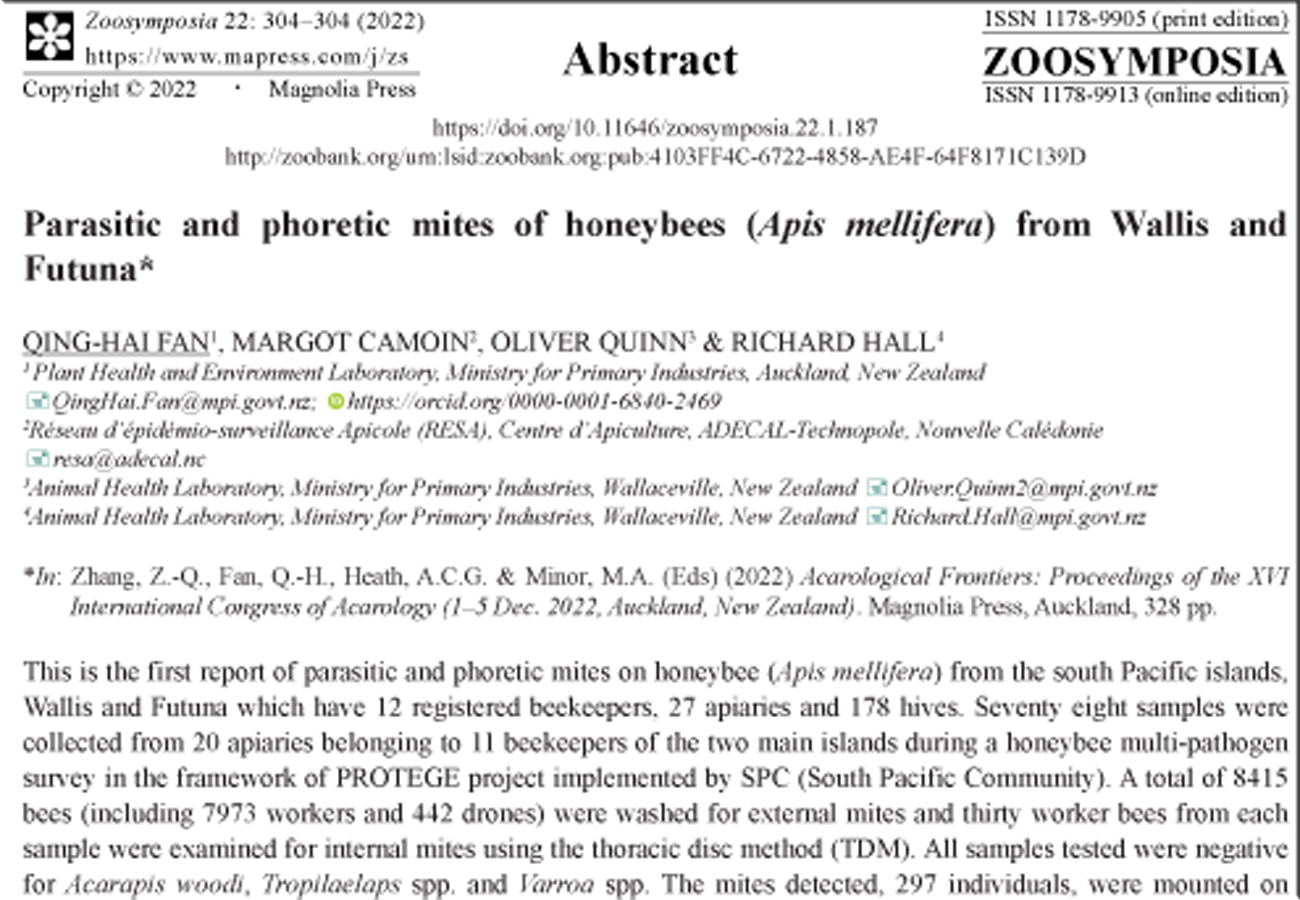Abstract
This is the first report of parasitic and phoretic mites on honeybee (Apis mellifera) from the south Pacific islands, Wallis and Futuna which have 12 registered beekeepers, 27 apiaries and 178 hives. Seventy eight samples were collected from 20 apiaries belonging to 11 beekeepers of the two main islands during a honeybee multi-pathogen survey in the framework of PROTEGE project implemented by SPC (South Pacific Community). A total of 8415 bees (including 7973 workers and 442 drones) were washed for external mites and thirty worker bees from each sample were examined for internal mites using the thoracic disc method (TDM). All samples tested were negative for Acarapis woodi, Tropilaelaps spp. and Varroa spp. The mites detected, 297 individuals, were mounted on microscope slides. Eleven species were identified, and all are new to the fauna of Wallis and Futuna. Acarapis dorsalis (57.69%, family Tarsonemidae) is the most common species, followed by Suidasia pontifical (20.51%, Suidasiidae), Hattena tongana (11.54%, Ameroseiidae), Tyrophagus javensis (10.26%, Acaridae), Afrocypholaelaps africana (7.69%, Ameroseiidae), Acarapis externus (2.56%, Tarsonemidae), and Chaetodactylus ludwigi (2.56%, Chaetodactylidae). Four other species, Brevipalpus obovatus (Tenuipalpidae), Cheletomimus bakeri (Cheyletidae), Tyrophagus communis (Acaridae) and Tyrophagus macfarlanei (Acaridae) were detected on only one occasion. Apart from these, nine were not identified to species: Cerophagopsis sp. (1 tritonymph) and Thyreophagus sp. (1 deutonymph) (Acaridae), Czenspinskia sp. (1 larva) and Vidia sp. (2 deutonymphs) (Winterschmidtiidae), Grallacheles sp. (1 protonymph) (Cheyletidae), Lipstorpia sp. (1 deutonymph) (Histiostomatidae), Tenuipalpus sp. (1 deutonymph) (Tenuipalpidae), Iolinidae indet. (1 damaged specimen) and Scheloribatidae indet. (1 male). All species detected are not considered pests of bees.
References
Gutierrez, J. (1981) Actualisation des données sur l’entomologie économique à Wallis et à Futuna. Nouméa, Nouvelle-Calédonie, ORSTOM, Laboratoire de Zoologie appliquée et de lutte biologique, 24 pp.
Martin, T. (1999) The animal health status of Wallis & Futuna. Secretariat of the Pacific Community, Noumea (New Caledonia), 29 pp.


